
WDFW Commissioners Discuss New Draft Conservation Policy
The Washington Fish and Wildlife Commission has “a very tricky editing exercise” ahead as members begin revising a new draft conservation policy that was rolled out during a meeting last Thursday.
Indeed, getting out their red pens was one of the things members generally agreed on, given some of the language that drew red flags for some.
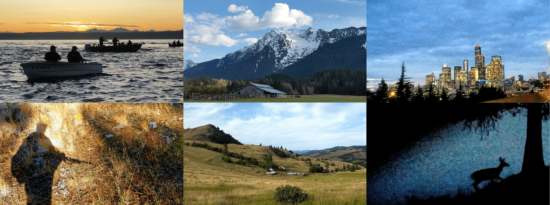
Drawing attention to the imperative in one statement – “conservation priorities and values must shift” – Don McIsaac asked, “All of them?”
And the retired director of the Pacific Fishery Management Council worried the sky-is-falling tone in places might not be best for such an important public document.
Policy drafter and Commission Vice Chair Barbara Baker disagreed in part with McIsaac but also acknowledged some of his concerns.
“Some of us, including me, do think that there is an important and looming crisis ahead of us, but I see your point about the ‘attitudes must shift’ language. That is probably a little bit strong,” Baker stated.
The verbiage came from the draft two-and-a-half-page “Conservation: A Commission and Department Policy Guideline,” first aired during the citizen panel’s Big Tent Committee meeting.
It was not the only thing that drew pushback.
“We should take ‘more precautionary approaches,'” read McIsaac from another section. “I wonder what that means? More precautionary than what? Across the board? To everything?”
“There are areas that I don’t think we need to be more precautionary … We already have a lot of precautionary management,” McIsaac added, pointing to this year’s preseason and inseason restrictions to protect a very weak return of Columbia summer steelhead while prosecuting fisheries on more robust Chinook and coho runs.
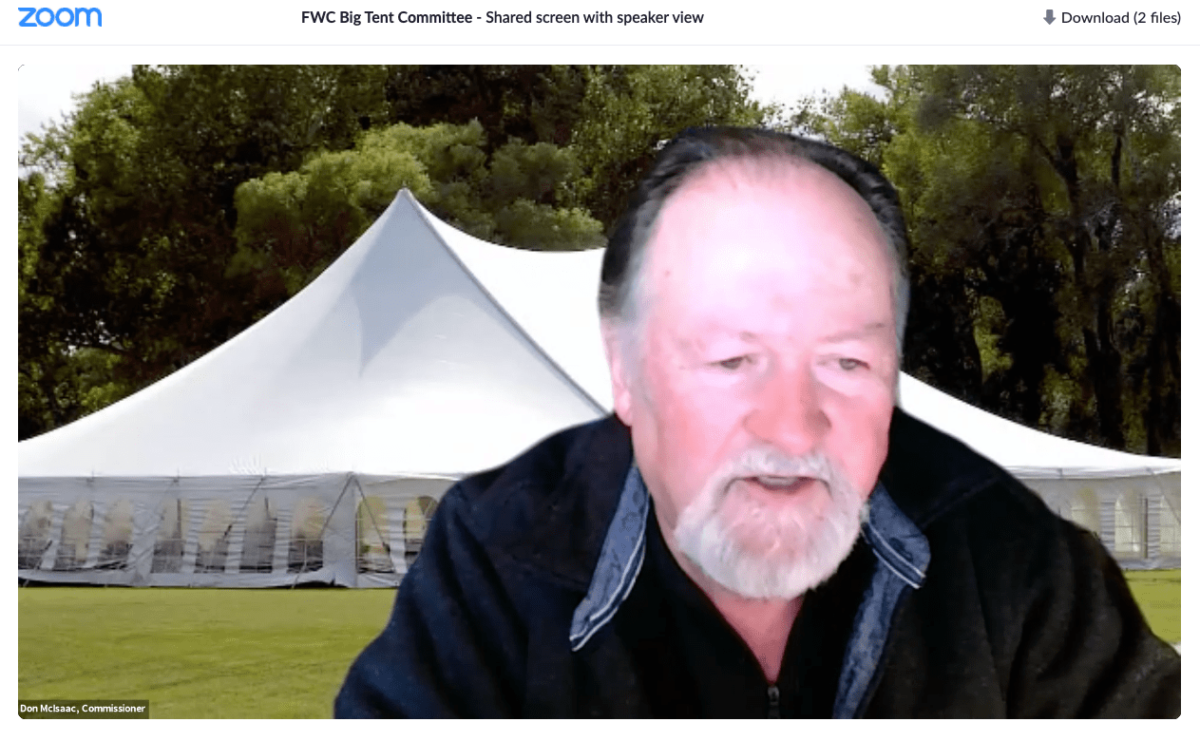
“Precautionary approach” is one of six bullet points in the draft.
Others include “Conservation first”; “All species, habitats and ecosystems are important”; “Conservation complexity requires partnerships”; “Bold, innovative leadership and solutions are necessary”; and “Modern conservation requires an aligned vision, strategy and funding level.”
The document also offers a new definition for conservation:
“Science-informed actions to preserve the health and resiliency of natural environments, safeguard the intrinsic values of non-human nature, and provide equitable benefits to current and future generations of people and species. These actions include protecting and restoring air, soil, water, biological diversity, ecosystem processes and evolutionary potential.”
Its broad, future-looking language and aspirational ideals are meant to expand support for WDFW’s myriad missions and herald a new kind of conservation, but aspects were always going to be problematic. In an initial reaction to this blog, a former agency wildlife biologist termed the draft “subversive agenda-driven paradigm-shifting prose” and called for a new version that was “broadly based with equitable input from across the spectrum of conservation visionaries.”
The term “native” in one section drew the eye of Spokane birder Kim Thorburn who has worked to restore and protect Washington’s prairie grouse, sharptails and sage.
“If this important partner [Pheasants Forever] reads that we’re only striving to protect ‘native fish and wildlife,’ it’s kind of a slap in the face. While it’s called Pheasants Forever, their work in conservation for upland bird species is absolutely essential to conservation in this state, so I’m worried about the word ‘native’ in front of ‘fish and wildlife,'” she said.
Ringneck pheasants were one of the earliest nonnative fish and game species introduced to the Northwest by settlers, arriving in the 1880s, followed by black crappie, largemouth bass and others. Today, managers are far less likely to let loose outside fish and wildlife, and in fact are beating them back in the case of invasive northern pike in the Upper Columbia and walleye in North Idaho.
Thorburn, who has become an unexpectedly strong supporter of hunts and fisheries, also took umbrage with the statement, “Status quo wildlife management has not kept pace with a rapidly changing world.'”
“I’m not sure what ‘status quo wildlife management is,'” she said. “My understanding of wildlife management is that (it’s) science based and there’s a lot of science and research to keep up with a rapidly changing world.”
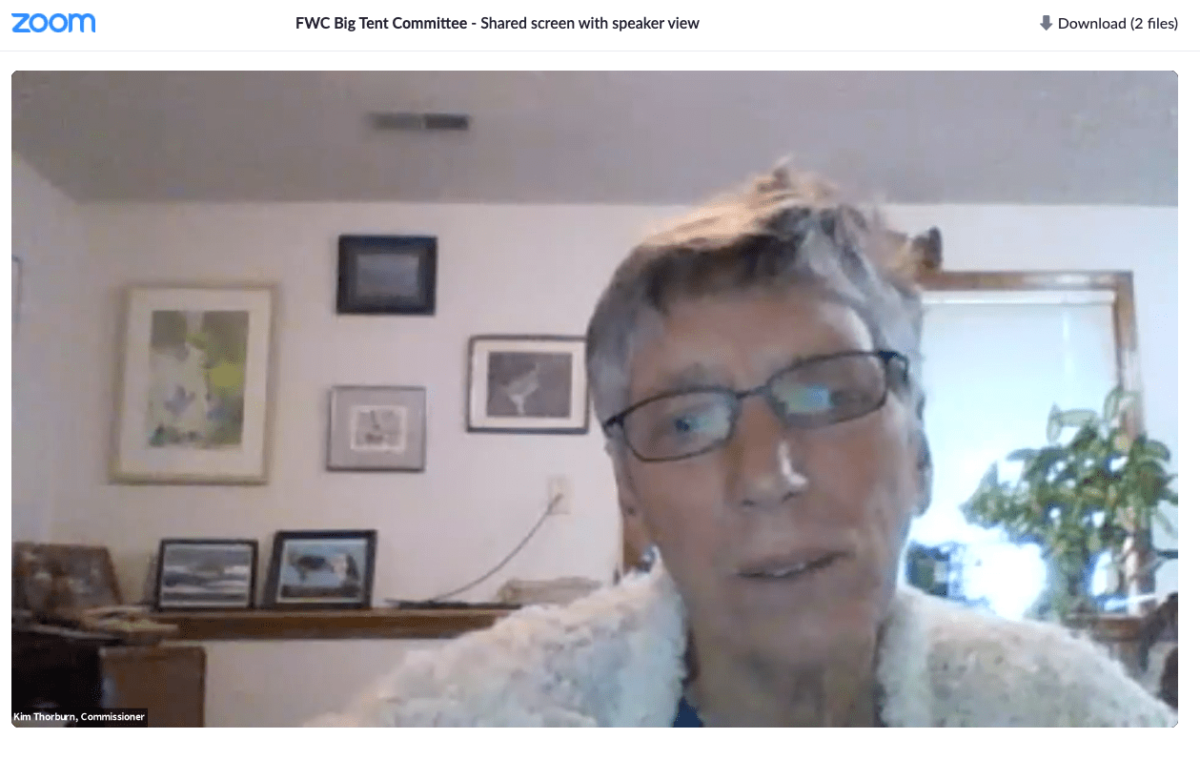
Thorburn said the draft “just feels very us vs. them” and that she felt it was rich with rhetoric. One section she pointed to was part of the proposed definition of conservation: “safeguard the intrinsic values of non-human nature.”
It all had her asking, where did this potential commission and WDFW policy come from?
Essentially, it’s an outgrowth of recent years’ development of the agency’s 25-year strategic plan, which, according to Baker, uses the word “conservation” repeatedly but without defining its meaning.
“We as a commission need to know what we are doing and this gets to the heart of the question,” Baker said.
She said the draft before the commission had gone through several iterations, with the first drawn up by Jeff Davis, WDFW director of conservation policy.
Davis pointed to commission discussions of two management models, the well-known North American Model of Wildlife Conservation and the broader, newer Wildlife Governance Principles.
“There was a discussion, ‘Hey, we don’t have to choose one or the other; we can take the best of both of those models, try to merge them together to create the Washington Fish and Wildlife Governance Principles,'” he explained. “I think that’s what you see in front of you as a draft to kind of kick off the conversation.”
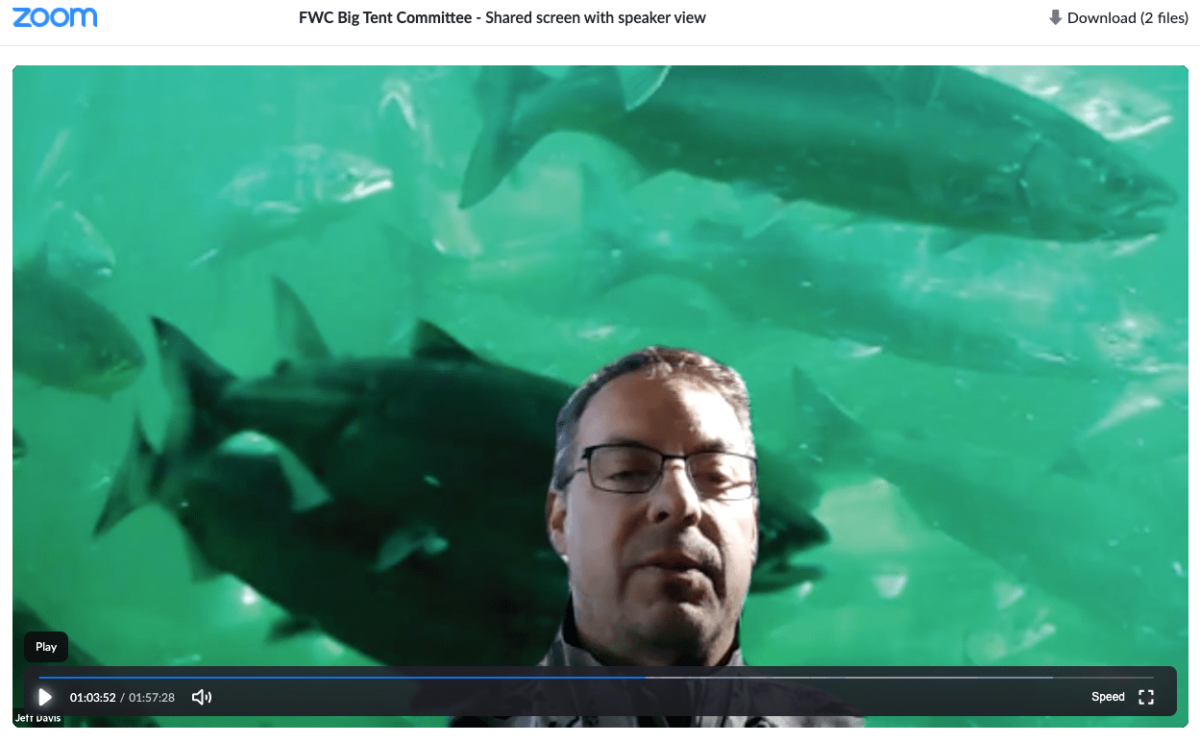
Davis said it would be very hard to find anybody who wouldn’t agree that conservation is highly important.
“I think some of the challenge historically is, what does conservation mean and how does that affect fish and wildlife and us and our expectations and needs?”
He termed putting the document forward for discussion now an “important first step” as the environment that salmon, steelhead, mule deer and myriad other species depend on begins to change at a more rapid rate and longterm issues compound problems.
“When I say that, it wasn’t so long ago that Washington’s human population was 1 million. As of the last estimate we were up to 8 million,” Davis said. “And in addition to that, as you all know, we’re experiencing rapidly changing effects on the environment from climate change. It’s a good time to be humble enough to look in the mirror and ask ourselves, ‘Do our conservation goals need to change, and if so, why and how, for what purpose?'”
Davis also said a new conservation policy didn’t have to choose between WDFW’s “customers,” and wildlife watchers and those who value wildlife for its intrinsic value.
“I’d argue that as a hunter and angler myself that, when we take a look at this – what our conservation goals have been and what they need to be, given the changing environment – we all need to make sure that we are meeting our conservation objectives such that it can support those hunting and angling opportunities, it can protect the diversity of opportunities for watchable wildlife, but also give the silent majority, I’ll call them, in the middle some confidence that we are managing fish and wildlife populations in the trust of the public and they can know that their fish and wildlife are being taken care of as part of that,” Davis said.
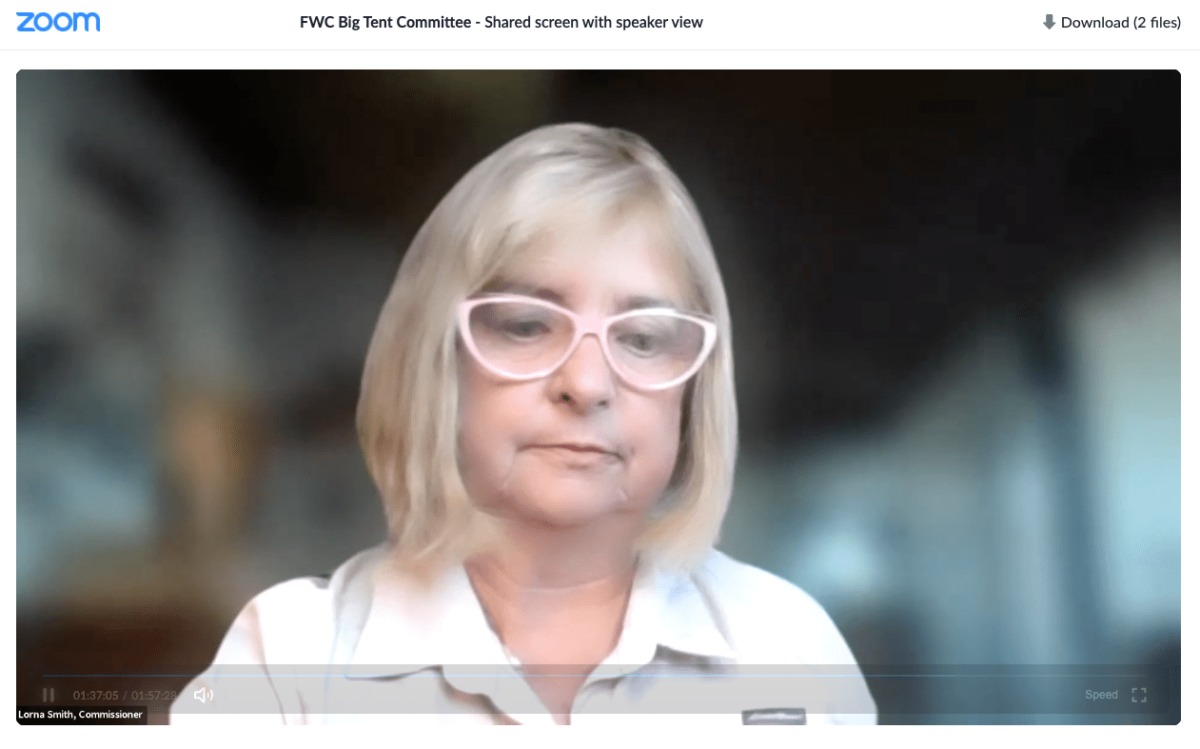
Commissioner Lorna Smith, whose appointment early this year raised eyebrows among WDFW’s traditional supporters, saw the draft policy as “close to what I’d like to see,” but she also took issue with Davis’s use of the words “customers” and “silent majority.”
The Port Townsend resident and former executive director of Western Wildlife Outreach argued that WDFW is largely supported by state and federal taxpayer and ratepayer dollars.
“Everybody helps support us and we need to remember that,” she stated.
Fair enough, but to be clear those passive donations are also made by hunters and anglers, who effectively and purposefully pull up to the toll booth a second and third time with our fishing and hunting license and gun, bullet and archery gear and fishing-related purchases, and in doing so provide a full third of the agency’s budget – diesel-strength pulling power in a state of comparative Priuses.
Then there are the sportsmen’s clubs who make fourth passes through the booth, providing valuable volunteer labor and on all manner of projects. Hell, some of us effectively make fifth runs in support of WDFW wildlife area acquisitions, fully knowing that the benefits go miles upon miles beyond antlers and fillets.
Another fellow 2021 Governor Inslee appointee, Fred Koontz, had a second hand in the draft. Koontz, who retired in 2017 after a varied career in the wildlife world including with Seattle’s Woodland Park Zoo, described his interest in defining conservation as having been on his mind “for awhile.”
He said the term was originally linked with “purpose and value,” but what he’d come up in his draft was a “modern synthesis of the term” for a changing world. Verbiage like “intrinsic values of non-human nature” harken to changing attitudes over the past 50 years, Koontz said.
“Conservation should be done in its own right. In other words, it doesn’t have to have a use of the animals,” he said.
Koontz said that nature alone has value without need for a direct human usage. He pointed out that with an estimated 60 percent loss of some 25,000 tracked species, the abundance of animals that provide cascading benefits is diminishing.
In the days since the discussion, WDFW announced that white-nose syndrome is spreading further in Washington bats, “important predators of night-flying insects. These bats benefit humans by eating tons of insects that can negatively affect forest health, commercial crops, and human health and well-being.”
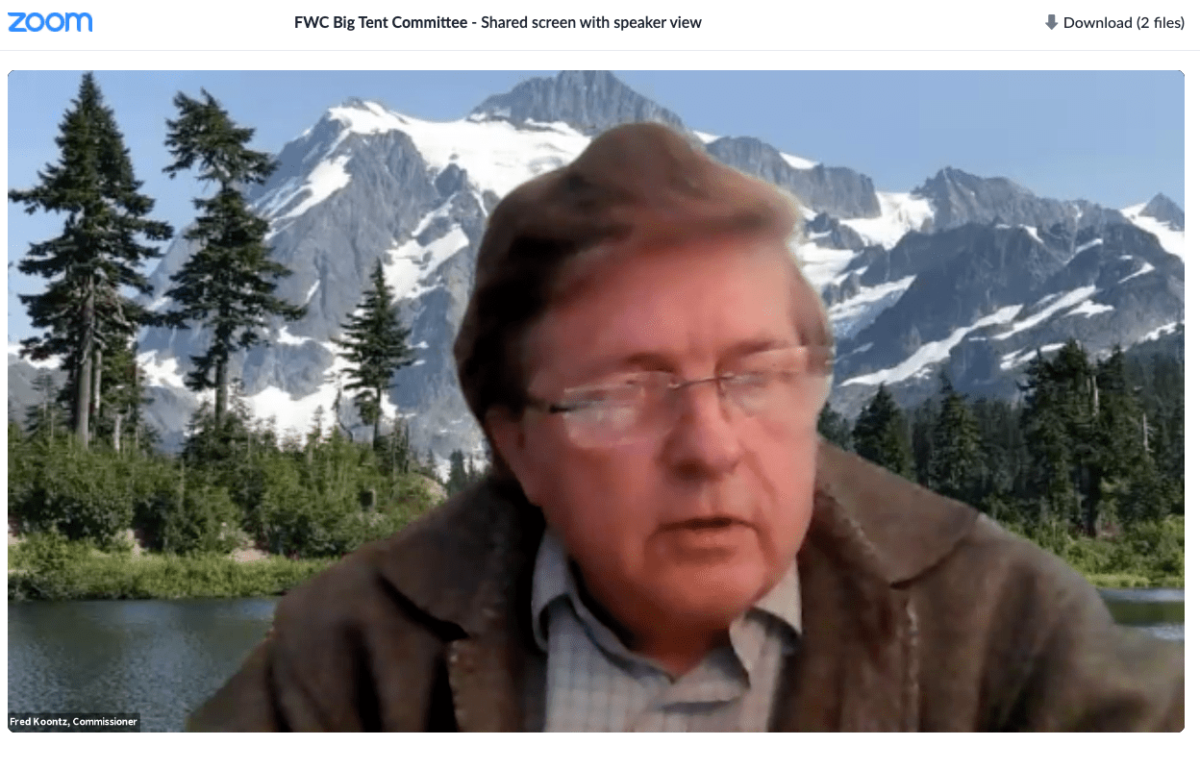
“My hope in this policy,” said Koontz,” is that our commission, our state, can help lead a model – and this is going to take time, right, this is just a first draft – that we can develop a model that could be used in, really, the growing dialogue across the nation about what conservation is in state fish and wildlife agencies. And once that’s clear, that might help, for example, strengthen our negotiations with Congress on RAWA, for example, if it’s clear, exactly, what conservation means and what the agencies mean. It could help us move forward in what I call a more modern direction.”
RAWA is the Recovering America’s Wildlife Act, a bipartisan bill introduced in both the US Senate and House of Representatives that would help fund recovery of imperiled species that state and tribal departments of fish and wildlife don’t always have the money to work on or Congress hasn’t seen fit to disburse for.
If passed in its current form, WDFW stands to pull in $21 million annually for some 268 species of concern, everything from wolverines to steelhead to bighorns to pygmy rabbits, per Conservation Northwest.
Koontz has for several years been involved in efforts to expand WDFW’s “tent” and bring in new allies in support of the agency’s overall missions and budget needs, serving on a pair of advisory panels – Budget and Policy, and Diversity. An essay he posted in 2018 also outlined his work to “transform” state wildlife agencies to a wider focus, including doing much more for nongame animals. The piece challenges the status quo of the North American Model of Wildlife Conservation and is off-putting in places to those just as deeply invested in this particular world but coming from the consumptive angle.
“It’s not in any way to discount our traditional partners and colleagues,” Koontz said during last Thursday’s discussion of the new conservation policy. “It’s to broaden the mission, not to limit the mission, but broaden the mission. To me, this is one of the most important things we can do.”
The day after the draft was revealed, Marie Neumiller, executive director of Spokane’s venerable Inland Northwest Wildlife Council, was skeptical.
“I appreciate the effort being made; however, the current draft as presented to the Big Tent Committee yesterday gave a very us vs them feel,” Neumiller told the full commission during open public comment last Friday morning. “Human vs non-human, consumptive vs non-consumptive, old vs new. This document divides and fails to recognize that we all play a large role in conservation … We are a part of nature, so we need to stop separating humans from nature and conservation policies. The preservationist ideal does not work because every move we make every day, even from within a city, impacts the natural world.”
In the days leading up to the policy rollout, the Spokane Spokesman-Review reported on a new local nonprofit joining “the conservation fray,” Washington Wildlife First, which “will set its sights on reforming state agencies, primarily the Washington Department of Fish and Wildlife,” per outdoors scribe Eli Francovich.
“State wildlife management must shift from a model of consumption to a model of conservation,” WWF’s Chris Bachman said in a statement run by the paper.
WDFW is in the crosshairs of numerous similar groups, from out-of-state pro predator organizations going to the governor to dictate agency wolf and cougar management, to the Wild Fish Conservancy, which recently switched its lawsuitinator from watchtower sniper mode – targeting specific hatchery steelhead programs – to full-auto, shotgun-in-the-mall rampage with a 60-day notice that goes after 14 spring and fall Chinook, coho and fall chum programs everywhere from Puget Sound’s Samish, North Fork Nooksack and Minter Creek, to Hood Canal’s Skokomish River, to the Lower Columbia’s Cowlitz and Lewis Rivers and Deep River netpens.
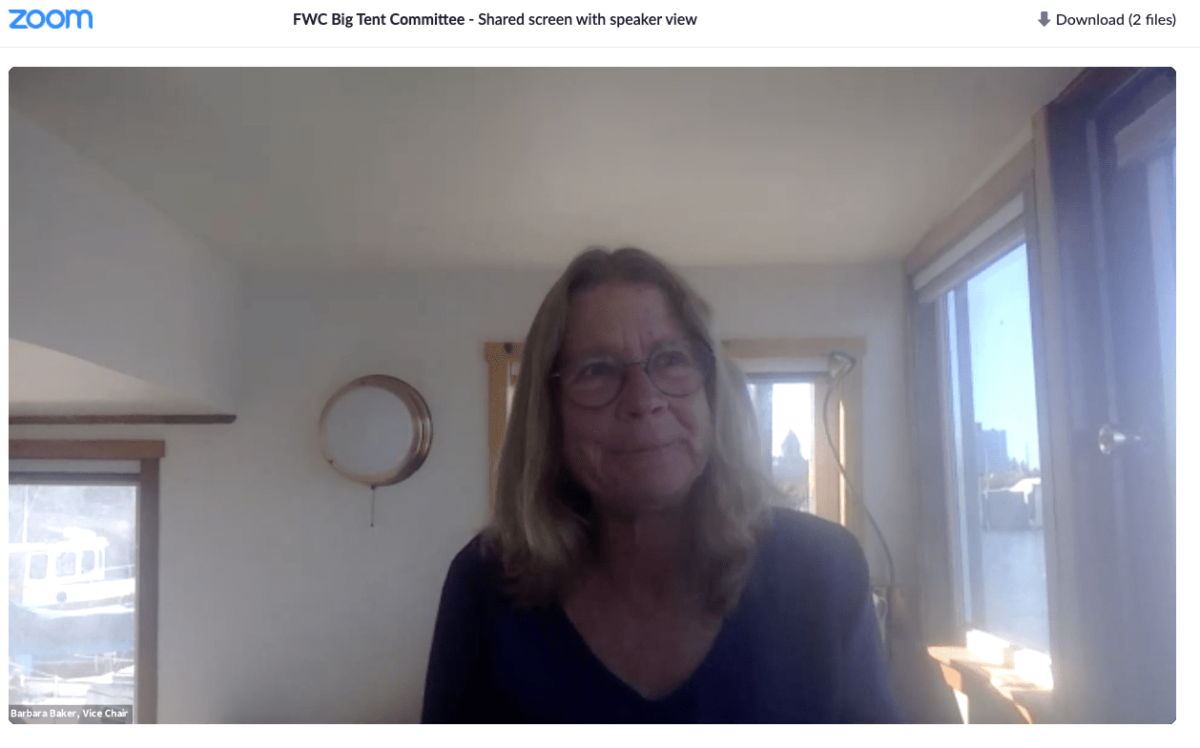
Vice Chair Baker had the third hand in the conservation draft before the committee. She said she’d tried to blend “the best parts” of Davis’s version and Koontz’s expansive vision to come up with the proposed policy at hand.
“It tries to set out very clearly our direction in these very-uncertain-for-what-we’re-trying-to-do times. And it’s also trying to sort of reduce conflict rather than increase it,” Baker said. “It seems time for us to set out what we mean by conservation and the principles by which we are going to achieve that goal, understanding that we probably won’t ever achieve true conservation and the state will be all pristine and habitat will be restored and the animals will be frolicking. But we need to consider our current situation, the current problem we have with climate, water, fire, and what we can state is our way that we intend to manage those resources. So that is what it is. We’re just throwing it out there and be ready to start the conversation.”
As the roughly hour-long back-and-forth neared an end, Baker thanked everyone for their thoughts and directed the draft policy’s most adamant supporter and its most ardent critic – Koontz and Thorburn, respectively – to work with Davis on edits. Koontz asked for members to send their comments to he and Thorburn.
“This is going to be a very tricky editing exercise because each one of us also has limits that we don’t want to go beyond,” Baker advised, adding, “I don’t want to see this document compromised into pablum.”
She said that that’s what happens in the state legislature – she was the chief clerk in the House of Representatives – to buy votes for bills.
“We don’t have time for that on this commission, and I don’t think we need to do that,” Baker said.
In response to McIsaac’s worry that the policy was being rushed into place – he pointed to the date at the top of the draft, “Month X, 2021,” and noted there were only a few months left in this year – Baker allowed that there wasn’t a timeframe to finalize it and the date was just part of the document’s template.
“But we don’t have forever to get this done. We need to have our vision defined,” she said.
Clarification, 2:18 p.m., September 28, 2021: The initial version of this blog listed Lorna Smith as the executive director of Western Wildlife Outreach, based on her biography on WDFW’s Fish and Wildlife Commission members webpage. This blog and the commission page have both since been updated to reflect that she no longer serves as the leader of the organization, a position she stepped down from when she came aboard the commission.
